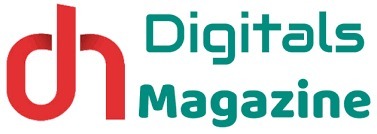What is SAFe? Why should you pursue an Agile SAFe certification? This blog will decode everything you need to know about the SAFe certificate.
To stand out from the crowd and get hired in today’s competitive job market, whether you’re just starting in the industry or elevating your career in a scaled agile framework, we will help you achieve your purpose.
This article will guide you through implementing a road map to choose which agile SAFe certification is proper for you.
What Is SAFe?
SAFe stands for Scaled Agile Framework. Scaling Agile Framework (SAFe) facilitates alignment, cooperation, and delivery among many agile teams.
The SAFe certificate proves that you can help organizations become successful lean-agile enterprises. This is important for professionals who work in these organizations and want to build careers in an agile business environment.
To improve the efficiency of their huge teams, businesses of any size can use SAFe to apply the agile methodology to their ongoing projects. As a result, you need to be familiar with SAFe to scale agile approaches at the corporate level properly.
Regarding integrating lean and system thinking with Agile development processes, Agile SAFe certification is one of the few effective frameworks.
Which Is The Best Agile SAFe Certification For You?
Scaled Agile offers 13 different certifications that professionals can choose from depending on their experience, so it is understandable where the confusion stems from.
Let us break down some of the certifications that are a must to start your journey to learn about SAFe concepts and adapt them to your workplace.
SAFe Agilist (SA)
The Agile SAFe certification is the basic entry-level program if you want to start. It is a compulsory 2-day training course that teaches you the principles and practices of the Scaled Agile Framework.
It explains what lean and agile businesses are, how to implement a lean and agile transformation, and how to think like an agile firm.
SAFe boosts quality, productivity, employee engagement, and time-to-market. You’ll learn how to align your organization around clear goals and increase value and workflow from strategy to execution.
Certified SAFe Scrum Master
This advanced certification program is perfect for preparing Scrum Masters to present and coach teams on the importance of business. Additionally, it gives them the tactical expertise and knowledge necessary to manage and work with distributed teams in remote settings as a scrum master in a SAFe organization.
The purpose of this training, which will take place over two days, is to provide professionals with an awareness of the responsibilities associated with the role of a scrum master in an organization.
Here, in this course, you will learn:
- Coordinate and plan Agile sprints, daily meetings, and reviews.
- Assist teams in completing and managing their work smoothly.
- Guide and inspire the Agile team.
- Mentor and coach the team.
Certified SAFe Advanced Scrum Master
With this advanced Scrum master certification, you can move on to the next level after getting the primary and intermediate certificates.
This intensive two-day workshop aims to help Scrum Masters become better leaders in their organizations by teaching them how to organize their teams, use the Scaled Agile Framework (SAFe), and ensure the success of their businesses. Course topics include program execution, ongoing program improvement, and promoting cross-team connections.
SAFe DevOps
DevOps professionals learn to work across non-technical, technical, and leadership roles in this two-day training to maximize their value stream.
This certification is ideal for product owners, managers, agile coaches, scrum masters, software engineers, etc. It entails teaching everyone involved in defining, building, testing, deploying, and releasing software-driven products to think in a way that is consistent with DevOps.
SAFe Architect
Over the course of three days, the individuals taking this course will look at the roles, responsibilities, and mindsets of Agile Architects.
It also looks at how to keep massive systems running smoothly while allowing for program deployment.
Participants learn about all facets of SAFe Architects, including their functions, duties, and mentality. Participants will depart with the knowledge they need to work well with Product/Solution Management to align what they learned and apply it to the business model. This will help large systems-of-systems get a steady flow of value and help SAFe programs run.
Conclusion
Agile SAFe certification is a comprehensive framework for large-scale Agile, Scrum, and Kanban implementation and scaling.
And that means getting the right amount of practice under the watchful eye of a trainer who is well-versed in SAFe’s principles, methodology, and application.
It is advised to start with a basic program and work your way up to more advanced levels.
Taking a lot of practice exams and spending sufficient time reviewing the basics and the more advanced material is essential. This can help you take stock of your current situation and design a strategy that works for you.
Hopefully, you found this article on Agile SAFe certification helpful. SAFe accreditation opens doors for those looking to climb the corporate ladder. With this credential, you can go from SAFe Practitioner to SAFe Expert.
















Leave a Reply